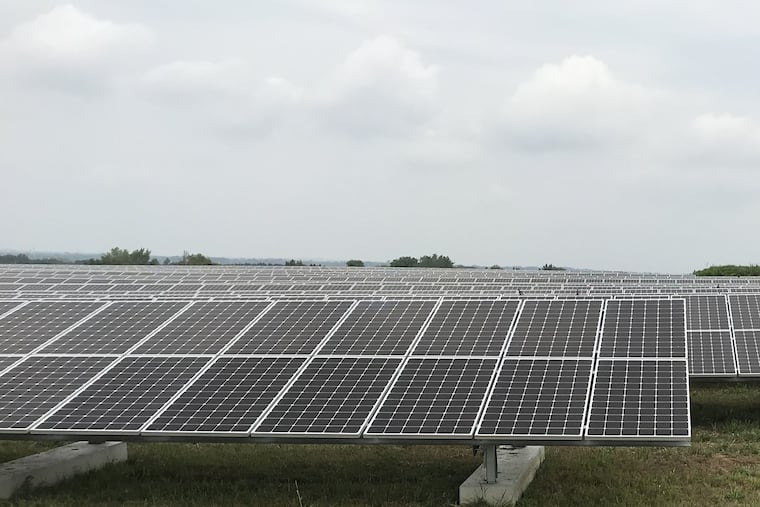South Jersey Superfund site transformed into solar field capable of powering up to 2,600 homes
A large Superfund site in Burlington County has been topped with 32,000 solar panels — enough to generate enough electricity to power 1,300 to 2,600 homes.

A landfill at a Superfund site in Burlington County has been topped with 32,490 solar panels capable of generating enough electricity to power 1,300 to 2,600 homes.
The U.S. Environmental Protection Agency announced Tuesday that the new solar farm is now operational at the Cinnaminson Groundwater Contamination Superfund Site, which spans 400 acres in Cinnaminson and Delran off Route 130, and bordered by Union Landing Road and Taylors Lane. The federal agency made the announcement with Waste Management, which owns landfills at the site, and PSE&G, which owns the equipment and will use the electricity — 13 megawatts — to serve its South Jersey customers.
The conversion of 25 acres of the site is part of the EPA’s 20-year-old Superfund Redevelopment Initiative.
“Land revitalization is a top priority of EPA’s Superfund cleanup mission,” said Pete Lopez, regional administrator for EPA Region 2, which includes New Jersey. “The Superfund Redevelopment Initiative has helped the Cinnaminson community reclaim and reuse this contaminated land, improving the quality of life, raising property values, and providing an environmentally beneficial energy alternative.”
Karen Reif, a PSE&G vice president, said the solar farm was part of the company’s “Solar 4 All” program. Under the program, PSE&G plans to develop 158 megawatts of universal solar capacity at landfills and brownfield sites that could power 25,000 homes. The solar arrays are connected directly to the grid.
PSE&G spokesman Francis Sullivan said that, as of the height of construction, about 75 people were working to build the solar farm. But there is no regular day-to-day staff at the farm now that it’s complete and in operation.
Using landfills as solar-generating sites has gained steam in recent years. Only about four miles away, Camden County has developed a 40,000-panel solar farm over more than a decade at the Pennsauken Sanitary Landfill. It now has the capacity to produce 5.2 megawatts of power.
The contaminated area of the Cinnaminson site comprises two former landfills, as well as houses and industrial properties. The landfills polluted the groundwater and soil at the site with benzene and arsenic. The EPA has been conducting a site cleanup for years, which included covering the landfills with a cap and installing systems to control leaking contaminated water and air. Groundwater is being pumped from the site to protect local drinking water supplies. The new solar array sits on one of the landfills.
The EPA says that 59 Superfund sites are home to “alternative-energy facilities.” As of last year, the facilities provided enough energy to power about 95,000 homes across the country. Most of the power is generated by a combination of wind, solar, and capturing methane from landfills.
Rafael Carrasco, a vice president at Waste Management, said his company is “the largest landfill-gas-to-energy developer and operator in North America” and supplies power for more than 460,000 homes in the United States. The company also plans to power its vehicles with natural gas generated at landfills.